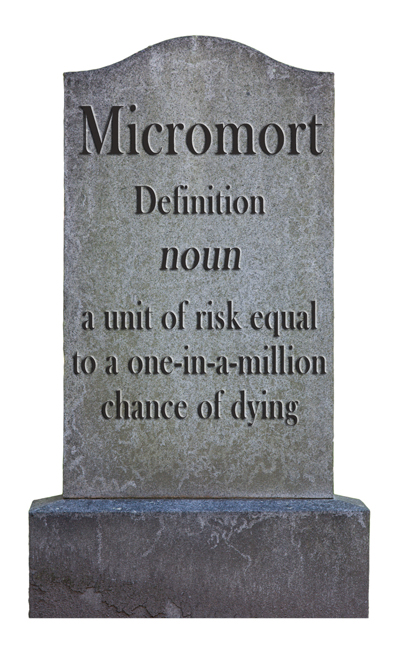But it’s a very small chance. Behold the morbid mathematical weirdness of micromorts.

But here’s the thing—everything carries with it some kind of risk. You could die by choking on a banana, or from spontaneous combustion. Both are extremely rare possibilities, but they’re possibilities nevertheless.
In 1970, those who had to assess risk for a living needed a term, and a mathematical figure, to measure those very, very small chances of death. Stanford University professor Ronald A. Howard invented the “micromort”—micro meaning “small” and mort coming from the Latin word for death. Simply put, a micromort is a tiny measure of potential deadliness—one micromort equals a one-in-a-million possibility of death. “A problem we continually face in describing risks is how to discuss small probabilities,” Howard wrote in 1989. “It appears that many people consider probabilities less than 1 in 100 to be too small to worry about.”
Basically, all activities increase your chance of death by a different amount of micromorts. Things that will increase your chance of death by 1 micromort include: drinking three glasses of wine, spending an hour in a coalmine, or eating 100 charcoal-cooked steaks. Those activities could lead to, respectively, cirrhosis, black lung, or cancer from eating ingesting a chemical called benzopyrene.
Some more micromort levels:
• Scuba diving adds about 5 micromorts.
• Hangliding is worth 8 micromorts. Skydiving is slightly less dangerous, at 7 micromorts.
• Using heroin? 30 micromorts…each time.
• Using the drug Ecstacy is worth about a half of a micromort, about the same risk as a day of skiing.







